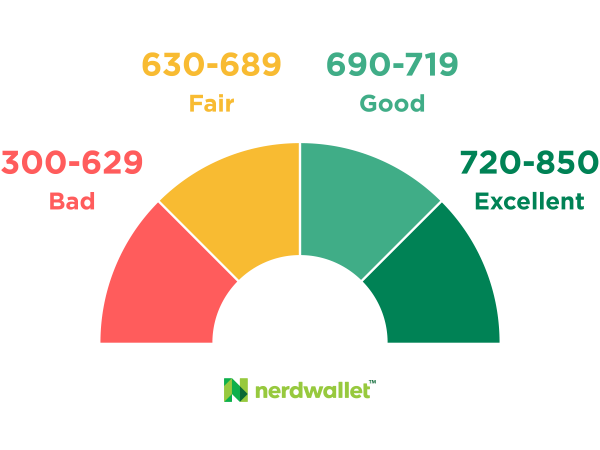
Our step-by-step guide details the mortgage application process, explaining what you do and what the lender does.

Taylor Getler
Writer | Home equity, first-time home buying, home warranties
Taylor Getler is a home and mortgages writer for NerdWallet. Her work has been featured in outlets such as MarketWatch, Yahoo Finance, MSN and Nasdaq. Taylor is enthusiastic about financial literacy and helping consumers make smart, informed choices with their money.
Reviewed by Michelle Blackford Michelle Blackford
Michelle Blackford spent 30 years working in the mortgage and banking industries, starting her career as a part-time bank teller and working her way up to becoming a mortgage loan processor and underwriter. She has worked with conventional and government-backed mortgages. Michelle currently works in quality assurance for Innovation Refunds, a company that provides tax assistance to small businesses.
At NerdWallet, our content goes through a rigorous editorial review process. We have such confidence in our accurate and useful content that we let outside experts inspect our work.
Assigning Editor Johanna Arnone
Assigning Editor | Mortgage lenders, homebuying, home equity
Johanna Arnone helps lead coverage of homeownership and mortgages at NerdWallet. She has more than 15 years' experience in editorial roles, including six years at the helm of Muse, an award-winning science and tech magazine for young readers. She holds a Bachelor of Arts in English literature from Canada's McGill University and a Master of Fine Arts in writing for children and young adults. Practice making complicated stories easier to understand comes in handy every day as she works to simplify the dizzying steps of buying or selling a home and managing a mortgage. Johanna has also completed coursework in Boston University’s Financial Planning Certificate program. She is based in New Hampshire.
Fact CheckedSome or all of the mortgage lenders featured on our site are advertising partners of NerdWallet, but this does not influence our evaluations, lender star ratings or the order in which lenders are listed on the page. Our opinions are our own. Here is a list of our partners.
You’ve decided to buy a home. Hooray! Now you need a mortgage. Take a breath — it’s not every day you apply for a loan with that many zeros.
Preparation is key, because after your purchase offer is accepted, the clock is ticking. Closing a mortgage transaction takes about 43 days on average, according to data provider ICE Mortgage Technology, though certain loan types may take a little longer.
By familiarizing yourself with the mortgage application process, you can be prepared to hit the ground running.
Review your credit report . You can access free reports from the top three credit reporting bureaus — Experian, Equifax and TransUnion — at AnnualCreditReport.com. You’ll want to check the report for errors and dispute anything that appears wrong, as this could be holding your score back.
You’ll also want to know where your credit score will likely stand with lenders. Scores in the most desirable range (720-850) are considered “excellent.” From there, scores in the 690-719 range are “good,” scores in the 630-689 range are “fair” and scores in the 300-629 range are “bad.” The higher your score, the more likely it is that you’ll be approved for a mortgage — and receive more favorable rate offers.

Explore different types of mortgages. This decision will largely come down to the rate, terms and requirements that best fits your needs.
For example, if you need a mortgage with flexible credit score requirements and a low minimum down payment, you might consider a loan backed by the Federal Housing Administration (FHA) . If you know that you’re only planning on being in the home for a few years, you may be interested in taking advantage of the lower introductory rate that comes with an adjustable-rate mortgage .
Considering your own needs as a borrower will help you narrow your search and seek out the type of mortgage that is right for you.
Research and compare lenders. Shopping around and applying with multiple lenders will allow you to compare offers and find the lowest rate. NerdWallet’s roundup of the best mortgage lenders can be a great place to start your search.
Assemble your loan paperwork . This includes:
Personal information, like your Social Security number and ID. Income verification, such as W-2s and pay stubs (or tax returns, if you’re self-employed). Federal tax returns. Bank statements. Proof of other debts and assets.Get preapproved to borrow at a given loan amount. This is a sort of preliminary application that you’ll fill out before you start looking at homes. Lenders will review your personal information, such as your credit report, income documentation and assets, to evaluate how much you may be eligible to borrow.
The lender will provide you with a letter detailing these results. When you’re ready to make an offer on a home, this letter can boost the chances of your offering being accepted, since it shows the seller that you can secure financing.
Work with a real estate agent and find your home . Referrals and online searches can be great ways to find real estate agents in the area where you’re planning to move. You’ll want to interview a few until you find an agent that you feel comfortable with — especially if you’ll have unique needs.
For example, if you’re getting an FHA loan or a loan backed by the Department of Veterans Affairs (VA) , the home has to meet certain requirements at the appraisal. An experienced agent can steer you toward homes that will meet these standards.
Explore mortgages today and get started on your homeownership goals Get personalized rates. Your lender matches are just a few questions away. What's your zip code? Do you want to purchase or refinance? What's your property type? How do you plan to use this property? Get StartedWon’t affect your credit score
Now that you’ve researched lenders, applied for preapproval and found a home that you’d like to buy, it’s time to actually apply for the mortgage. All in all, the entire process from application to closing could take anywhere from two weeks to two months.
If you’ve already gone through the preapproval process, you’ll use similar documentation to fill out an application. Like with preapproval, applying with multiple lenders will give you a range of rates and terms to choose from. As long as all of your applications are submitted within a 45-day window, they’ll count as only one hard credit inquiry — meaning that your credit score won’t be affected by applying with three or four lenders any more than it would be affected by one application.
Many lenders have application portals on their websites, allowing you to apply entirely online. If you’d prefer to talk with a person through the process, you may also be able to apply via phone or in person at a branch location, depending on your lender of choice.
It's a good idea to order a home inspection to assess the property’s condition immediately, even though lenders don't require it. You can get a fuller understanding of the condition of the home, and if something is found to be severely wrong, you may even decide to withdraw your offer. This will cost around $300 to $500.
By law, a lender has three business days after receiving your application to give you a Loan Estimate form, a detailed disclosure showing the offered loan amount, type, interest rate and all estimated costs of the mortgage, including hazard insurance, mortgage insurance, closing costs and property taxes.
Applying to more than one lender has given you options. Now use your Loan Estimate forms to compare terms and costs. At the upper right corner of the first page you’ll see expiration dates for the interest rate — find out if it's “ locked ” or if it’s subject to change.
You’ll want to lock in your rate as soon as possible, as it must be done before closing. This ensures that there will be no surprises, and you’ll know exactly what you’re paying from your first bill.
You’ll also see a section detailing estimated closing costs. Ask the lender to explain anything you don’t understand.
The third page of the Loan Estimate includes a “Comparisons” section, which includes key information that you can use to compare offers:
Total cost in five years. This is all charges — including interest, principal and mortgage insurance — that you'll incur within the mortgage's first five years.
Principal paid in five years. This is the amount of principal you’ll have paid off in the first five years.
APR , also known as annual percentage rate . This figure accounts for your interest rate plus any fees or points . Usually, the APR is higher than your rate.
Percent paid in interest. This represents how much interest contributed to the final balance of the loan. It's not the same as the interest rate.
After comparing your loan estimates, choose the best fit and contact the lender to tell them you’re ready to move forward. They may ask for additional documentation. You’ll also want to purchase homeowners insurance , as you’ll need it before you can receive final approval.
This stage involves reviewing the accuracy of your mortgage application, and every statement you made goes under the microscope. Your lender will order an appraisal of the property to ensure that its value matches the purchase price. Brace for questions and document requests, and respond promptly to keep everything moving forward.
You’ll want to avoid any moves that could disrupt your credit, as this could jeopardize your mortgage approval. Don’t open any new lines of credit or make any major charges, and pay all of your bills on time.
Now that the lender has verified the information in your application, the underwriter will use it to judge the risk of lending money to you on this property.
What’s your loan-to-value ratio (the mortgage amount relative to the value of the home)? Do you have the cash flow to make the monthly payments? What’s your history of making payments on time? Is the home valued correctly, the condition good and title clear? Do you have a spotty employment history?If the underwriter does not have enough information to make a decision on the loan, you may have to provide further documentation.

In this final step, the lender must act before you can move forward.
With time to spare (hopefully) before your closing date, you hear from the lender with happy news: “You're cleared to close!”
The lender must send you another federally required form, the Closing Disclosure , three business days before your scheduled closing date. It shows the detailed and final costs of your mortgage.
Compare the Closing Disclosure with your Loan Estimate to see if any of the quoted fees or numbers have changed. If they have, ask the lender to explain. If you haven’t locked in your rate yet, you’ll want to do it now.
If you’ve chosen to pay closing costs all at once, now is when you’ll arrange to do so via wire or cashier’s check. Some borrowers wrap these fees into the total cost of the loan. Closing costs are typically between 2% and 6% of your loan amount. You can estimate this amount using NerdWallet’s closing cost calculator .
About the authorYou’re following Taylor Getler
Visit your My NerdWallet Settings page to see all the writers you're following.
Taylor Getler is a home and mortgages writer for NerdWallet. Her work has been featured in outlets such as MarketWatch, Yahoo Finance, MSN and Nasdaq. Taylor is enthusiastic about financial literacy and helping consumers make smart, informed choices with their money. Email: [email protected]. See full bio.
On a similar note.


Get a free, personalized financial plan with actionable steps to finally hit your money goals.
Powered by Uprise

Download the app

Disclaimer: NerdWallet strives to keep its information accurate and up to date. This information may be different than what you see when you visit a financial institution, service provider or specific product's site. All financial products, shopping products and services are presented without warranty. When evaluating offers, please review the financial institution's Terms and Conditions. Pre-qualified offers are not binding. If you find discrepancies with your credit score or information from your credit report, please contact TransUnion® directly.
NerdUp by NerdWallet credit card: NerdWallet is not a bank. Bank services provided by Evolve Bank & Trust, member FDIC. The NerdUp by NerdWallet Credit Card is issued by Evolve Bank & Trust pursuant to a license from MasterCard International Inc.
Impact on your credit may vary, as credit scores are independently determined by credit bureaus based on a number of factors including the financial decisions you make with other financial services organizations.
NerdWallet Compare, Inc. NMLS ID# 1617539
California: California Finance Lender loans arranged pursuant to Department of Financial Protection and Innovation Finance Lenders License #60DBO-74812
Insurance Services offered through NerdWallet Insurance Services, Inc. (CA resident license no.OK92033) Insurance Licenses
NerdWallet™ | 55 Hawthorne St. - 10th Floor, San Francisco, CA 94105